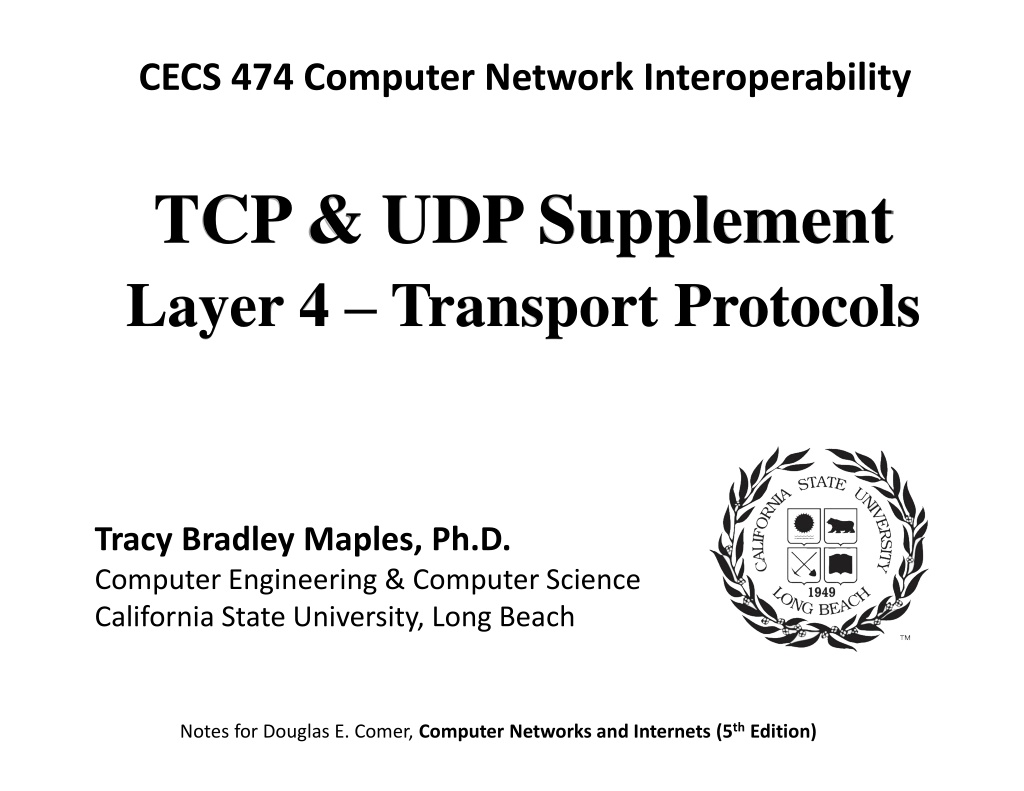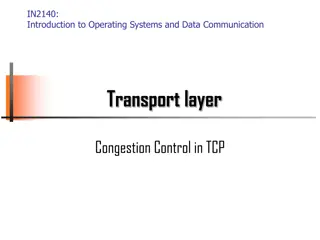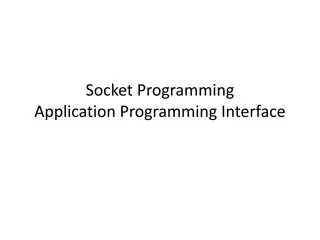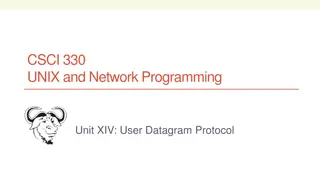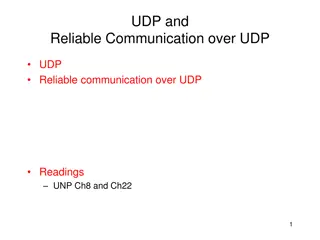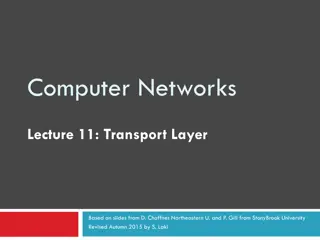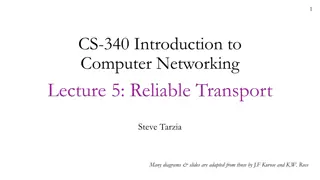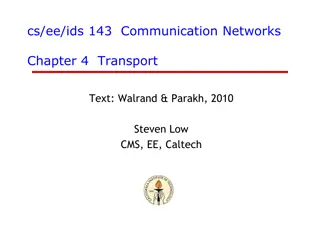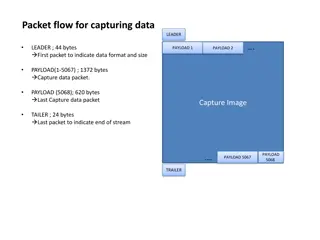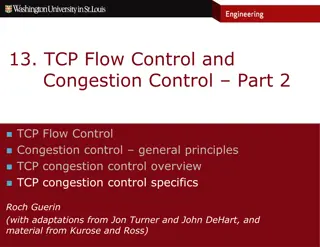Understanding TCP and UDP in Computer Network Interoperability
The Transport Layer in computer networks facilitates logical communication between application processes on different hosts. Two key transport protocols, UDP and TCP, provide distinct services - UDP offers unreliable and unordered delivery, while TCP ensures reliable and ordered delivery with features like connection set-up and congestion control. UDP, known for its simplicity and loss tolerance, is commonly used in streaming multimedia applications, DNS, and SNMP. On the other hand, TCP establishes point-to-point connections, supporting full-duplex data flow with reliable byte stream transmission without message boundaries between bytes.
Download Presentation

Please find below an Image/Link to download the presentation.
The content on the website is provided AS IS for your information and personal use only. It may not be sold, licensed, or shared on other websites without obtaining consent from the author. Download presentation by click this link. If you encounter any issues during the download, it is possible that the publisher has removed the file from their server.
E N D
Presentation Transcript
CECS 474 Computer Network Interoperability TCP & UDP Supplement Layer 4 Transport Protocols Tracy Bradley Maples, Ph.D. Computer Engineering & Computer Science California State University, Long Beach Notes for Douglas E. Comer, Computer Networks and Internets (5th Edition)
The Transport Layer GOAL: The Transport Layer provideslogical communication between application processes running on different hosts. Transport protocols run in the end systems (end-to-end) The sending side breaks application messages into segments and passes them down to the Network layer The receiving side reassembles the segments into messages and passes them up to the Application layer NOTE: The Network Layer provides logical communication between hosts. The Transport Layer provides logical communication between processes.
Transport Layer Protocols Two Transport Protocols are available for Applications to use on the Internet: 1. UDP 2. TCP UDP (User Datagram Protocol) Provides: Unreliable, unordered delivery of segments. TCP (Transmission Control Protocol) Provides: Reliable, in-order delivery of segments. TCP includes: Connection set-up (3-way handshake) Flow Control Congestion Control NOTE:Neither protocol provides: Delay guarantees Bandwidth guarantees
UDP (User Datagram Protocol) UDP is: A no frills, bare bones Internet Transport protocol Provides best effort service UDP segments may be: lost delivered out of order to application Connectionless UDP: has no handshaking between UDP sender, receiver each UDP segment handled independently of others
UDP (User Datagram Protocol) (contd) Since UDP provides so few services, why is there a UDP? 1. UDP has no connection establishment => So it has lower delay It is simple (no connection state is need at sender, receiver) It has a small segment header UDP has no congestion control => UDP can blast away as fast as desired 2. Uses of UDP: It is often used for streaming multimedia apps, because UDP is: loss tolerant rate sensitive UDP is also used in: DNS SNMP
TCP (Transmission Control Protocol) TCP characteristics: point-to-point connections one sender, one receiver full duplex data: bi-directional data flow in same connection reliable, in-order byte steam transmission with no message boundaries between bytes pipelined transmission multiple segments are sent at the same time Maximum segments sent simultaneously = TCP congestion/flow control window size send & receive buffers at sender and receiver connection-oriented: handshaking occurs between the sender, receiver before data exchange Uses flow control: The sender will not overwhelm receiver s buffer
TCP (Transmission Control Protocol) (contd) Conceptual View application writes data application reads data socket door socket door TCP TCP send buffer receive buffer segment Figure from Kurose & Ross, Networking: A Top Down Approach
TCP (Transmission Control Protocol) (contd) TCP creates reliable data service on top of IP s (Layer 3 s) unreliable delivery service. To make transmission reliable, TCP uses: pipelined transmission of segments send & receive buffers at sender and receiver ACKs (Acknowledgement) messages sent when segments are received correctly A retransmission timer The time will expire if an ACK is not received during the specified time Retransmissions of segments occur whenever the timer expires. NOTE: We are skipping the messy details of Reliable data transmission!
TCP (Transmission Control Protocol) (contd) Important: When an Application sends a message down the protocol stack, it selects whether TCP or UDP should be used for the transmission: HTTP, FTP, TELNET, etc. Layer 5 - Application TCP UDP Layer 4 - Transport IP Layer 3 - Network Layer 2 - Link Ethernet, WiFi, PPP, etc. Guided or Unguided media Layer 1 - Physical
